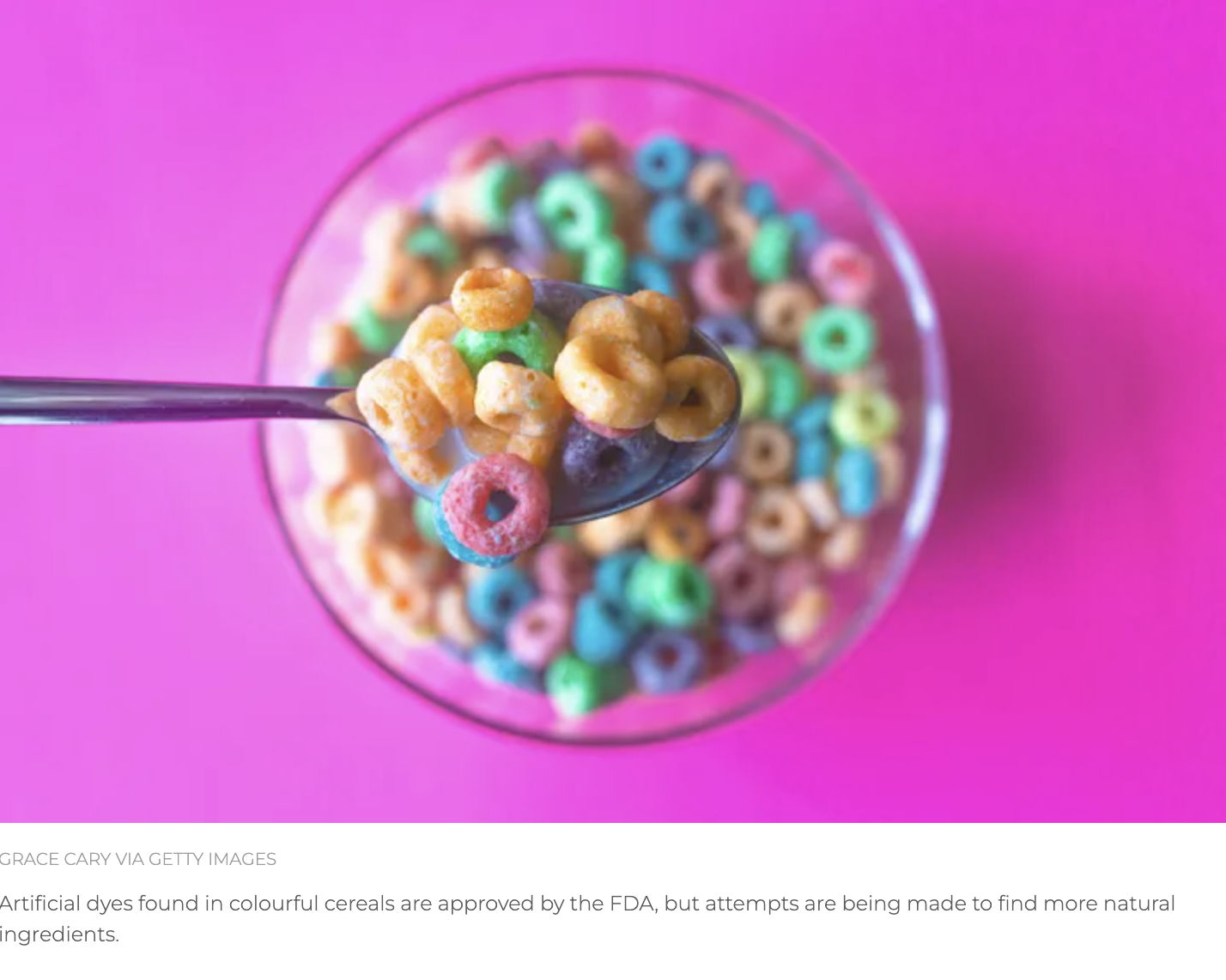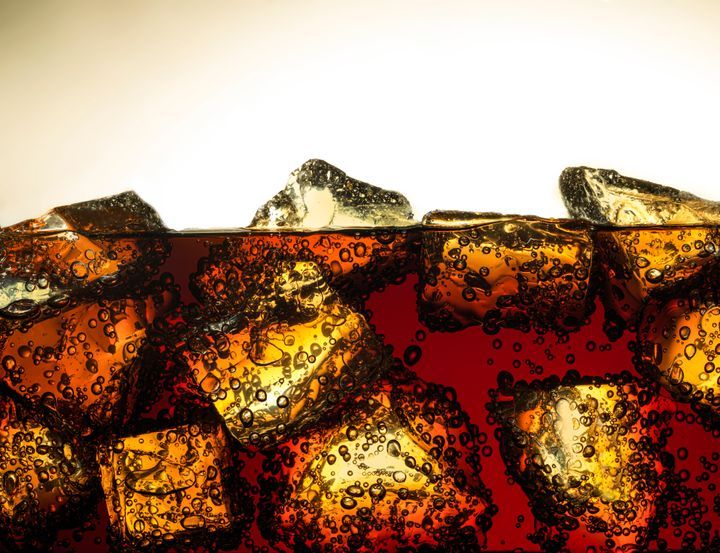The Additives And Ingredients That These Food Scientists Personally Avoid

There are many ways to measure whether a food’s ingredients are “good for you” or not, and the answer may be different depending on if you ask a cardiologist, an environmental scientist or a nutritionist. Food scientists, who specialise in creating food that tastes better and lasts longer, have strong thoughts too.
“As the food industry began developing food for shelf stability, we started adding ingredients that were stable, inexpensive and helped to preserve the food,” said Tiffany Swan, a food scientist and chef. “This means trans fats, dough extenders and preservatives worked their way into our foods.”

Reading food labels and understanding what the ingredients are can help customers make more informed choices. “As a consumer, I think it is good to look out for the ingredients that aren’t common in the home pantry,” Swan said.
Below are the ingredients that food scientists told HuffPost they try to avoid.
Artificial dyes
Artificial dyes enhance the color of food products and can make an item more appealing. The Food and Drug Administration approves artificial dyes and color enhancements in an array of foods, including beverages, baked goods, candy, cereals, desserts, salad dressings and more, requiring that all artificial dyes be listed on the label by name or abbreviation.
Jessica Gavin, a certified food scientist and culinary scientist, always avoids artificial dyes like FD&C Yellow No. 5 and Yellow No. 6. “They add a bright yellow or orange-yellow hue to chips, cereals, soft drinks, sauces, popcorn and candies,” she said. “As a parent, I want to limit the risk, when possible, with the foods my children are consuming.”
“There have been studies conducted potentially linking the artificial yellow dyes with ADHD and hyperactivity in children,” Gavin explained, though she noted that the link “has not been proven.”
The FDA does consider approved artificial dyes safe for use in food products, but also cautions, “It is possible, but rare, to have an allergic-type reaction to a color additive. For example, FD&C Yellow No. 5 may cause itching and hives in some people.”
Food companies may be taking notice too. “Lately, I have been requested to avoid artificial flavors, artificial colors and preservatives [in the foods I consult on],” said Brian Chau, a food scientist. “Based on requests, I have avoided these ingredients, and the general trend is to use natural flavors, natural colors and different means of processing to extend shelf life without the need of preservatives.”
Cultured celery extract
“The term ‘cultured celery extract’ may appear innocuous, especially given the current trend of consumer preference for natural over synthetic ingredients,” said food scientist Jennifer Pallian. “It is just stealthily rebranded nitrates.”
So what is this extract, exactly? “Cultured celery extract is created by fermenting celery and then concentrating the resulting substance, which is rich in nitrates,” Pallian said. Synthetic forms of nitrates and nitrites are commonly used as preservatives in meat products such as hot dogs, sausages and bacon.
Nitrates and nitrites occur naturally in some vegetables such as leafy greens, beets and carrots, and are important for the digestive system. Nitrates can be broken down in a couple of ways. One, known as nitric oxide, is good for our health, while the other, nitrosamines, can be harmful.
“The issue arises when these nitrates, whether naturally occurring as in cultured celery extract or synthetic like sodium nitrate, interact with amines in the body,” Pallian explained. “This interaction can lead to the formation of nitrosamines, a class of compounds that have been found to be potentially carcinogenic.”
“Being educated about such ‘rebranded’ ingredients can empower you to make more informed choices about your diet,” Pallian added.

Sodas are often made with high-fructose corn syrup.
High-fructose corn syrup
High-fructose corn syrup is a sweetener derived from corn that is heavily processed and often used as a substitute for sucrose, a naturally occurring form of sugar.
Most soda brands use high-fructose corn syrup instead of sucrose because it’s a cheaper alternative. Additionally, Gavin said, HFCS is “often used in snacks, juice and cereals as an affordable sweetener option to help a product have desirable taste and texture attributes.”
Unsurprisingly, this sweet ingredient isn’t good for your health. Doctors and nutritionists have been warning about the negative impacts of HFCS, and you may not be surprised that food scientists avoid it too.
“Consuming too much HFCS or sucrose over time can lead to increased liver fat and risk for Type 2 diabetes,” Gavin explained. She always checks the nutrition label and the ingredients. “As a mom of two children, I look to limit the amount of added sugar in a product that I give them for snacks or a quick breakfast.”
In general, too much sugar can lead to various health issues, such as high blood sugar, weight gain and obesity, not to mention diabetes.
Even a substitute like agave nectar, which is often considered “better than sugar,” can have its drawbacks. “The perception of agave nectar as a healthy alternative to sugar largely comes from its lower glycemic index, which means it raises blood sugar more slowly than table sugar,” Pallian explained. “However, the main reason for its low glycemic index is its high fructose content, which poses the health concerns everyone went bananas about when high-fructose corn syrup gained the negative spotlight.”
Sugar alcohols (found in sugar-free foods)
Another ingredient to avoid is sugar alcohol. Food products labeled as sugar-free or calorie-free usually have sugar alcohol, a carbohydrate that has similar characteristics to both sugar and alcohol, according to the FDA.
“Personally, I always check for sugar-free formulations in foods and beverages and try to avoid sugar alcohols like sorbitol,” said Zachary Cartwright, a senior food scientist at Aqualab.
“From a food formulation perspective, removing sugar and replacing it with sugar alcohol or any sugar substitute can have physical effects, [like] texture changes, chemical effects, changes in reaction rates and biological effects, susceptibility to microbial growth,” Cartwright said.
Because it isn’t a natural ingredient, it’s difficult for the body to digest sugar alcohol. “I avoid sugar alcohols because they can cause gastrointestinal distress and also have a laxative effect,” Cartwright said. “The severity of this effect can greatly range from person to person.”
Tara flour
Tara flour is relatively new in the United States and is made from seed pods from the tara tree, also known as spiny holdback or Peruvian carob, which grows predominantly in Peru and other countries in South America. Chau said he avoids tara flour “because it is too new to the market and may be introduced to too many people without a good study to provide overall safety.”
Tara flour made headlines when the company Daily Harvest recalled 28,000 units of its frozen Lentil and Leek Crumbles due to gastrointestinal issues. It was the company’s only product that contained tara flour.
Chau explained that FDA testing found it “to have a high heavy metal count that may have caused hospitalisation through the high heavy metal level of consumption.” According to one initial study, it appears tara flour has high levels of the nonprotein amino acid known as baikiain, but more research is needed.
One of the main issues with this ingredient is the lack of research. “Tara flour has not been tested in a larger population size,” Chau said. “High toxicity has caused liver failure and gallbladders to be removed, [and] symptoms include fatigue, yellowness in eyes, forgetfulness, aches and pains in the muscle and joints, and abdominal pain on top of vomiting and diarrhoea.”